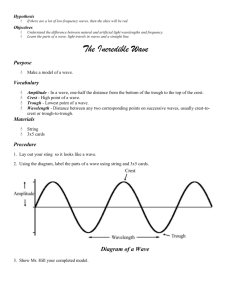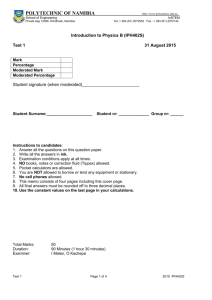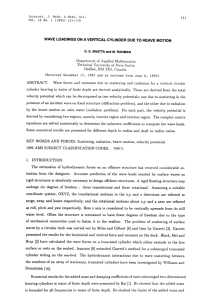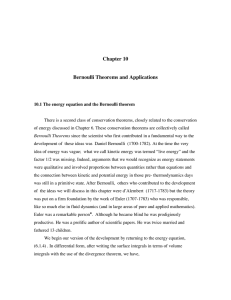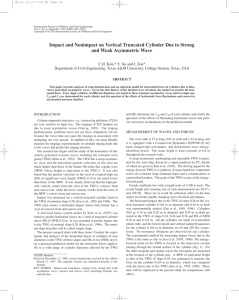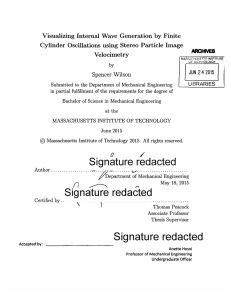Wave forces on a vertical cylinder
advertisement
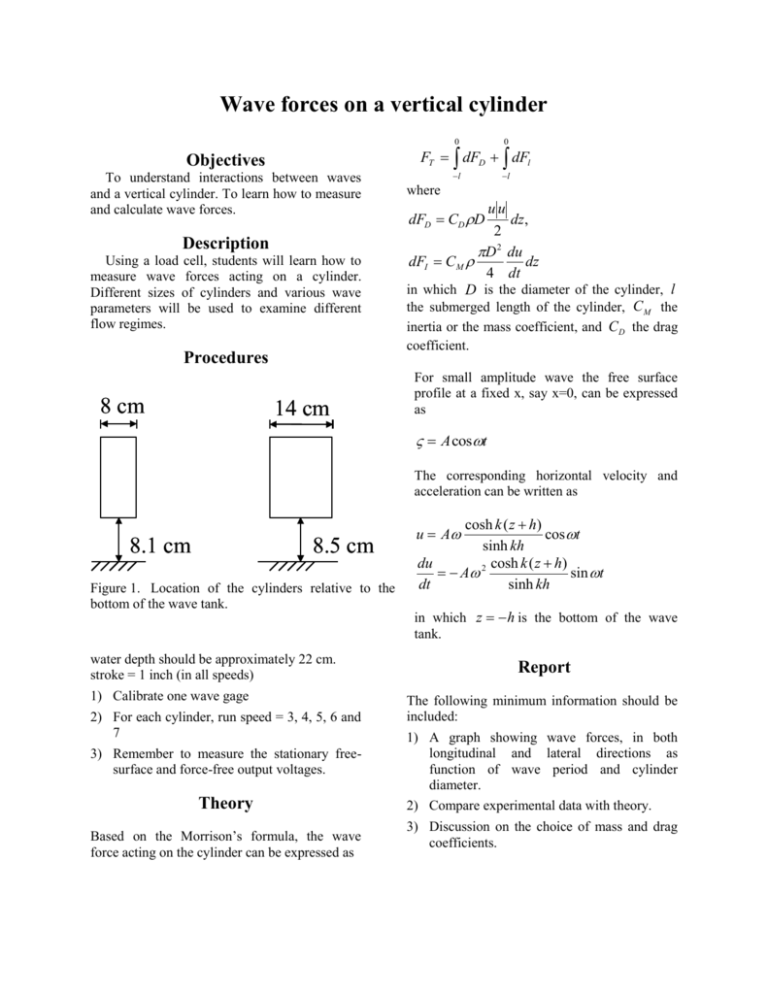
Wave forces on a vertical cylinder 0 l l FT dFD dFl Objectives To understand interactions between waves and a vertical cylinder. To learn how to measure and calculate wave forces. Description Using a load cell, students will learn how to measure wave forces acting on a cylinder. Different sizes of cylinders and various wave parameters will be used to examine different flow regimes. where uu dz , 2 D 2 du dFI C M dz 4 dt in which D is the diameter of the cylinder, l the submerged length of the cylinder, C M the inertia or the mass coefficient, and C D the drag dFD CD D coefficient. Procedures 8 cm 0 14 cm For small amplitude wave the free surface profile at a fixed x, say x=0, can be expressed as A cost The corresponding horizontal velocity and acceleration can be written as 8.1 cm 8.5 cm Figure 1. Location of the cylinders relative to the bottom of the wave tank. water depth should be approximately 22 cm. stroke = 1 inch (in all speeds) 1) Calibrate one wave gage 2) For each cylinder, run speed = 3, 4, 5, 6 and 7 3) Remember to measure the stationary freesurface and force-free output voltages. Theory Based on the Morrison’s formula, the wave force acting on the cylinder can be expressed as cosh k ( z h) cos t sinh kh du cosh k ( z h) A 2 sin t dt sinh kh u A in which z h is the bottom of the wave tank. Report The following minimum information should be included: 1) A graph showing wave forces, in both longitudinal and lateral directions as function of wave period and cylinder diameter. 2) Compare experimental data with theory. 3) Discussion on the choice of mass and drag coefficients.






